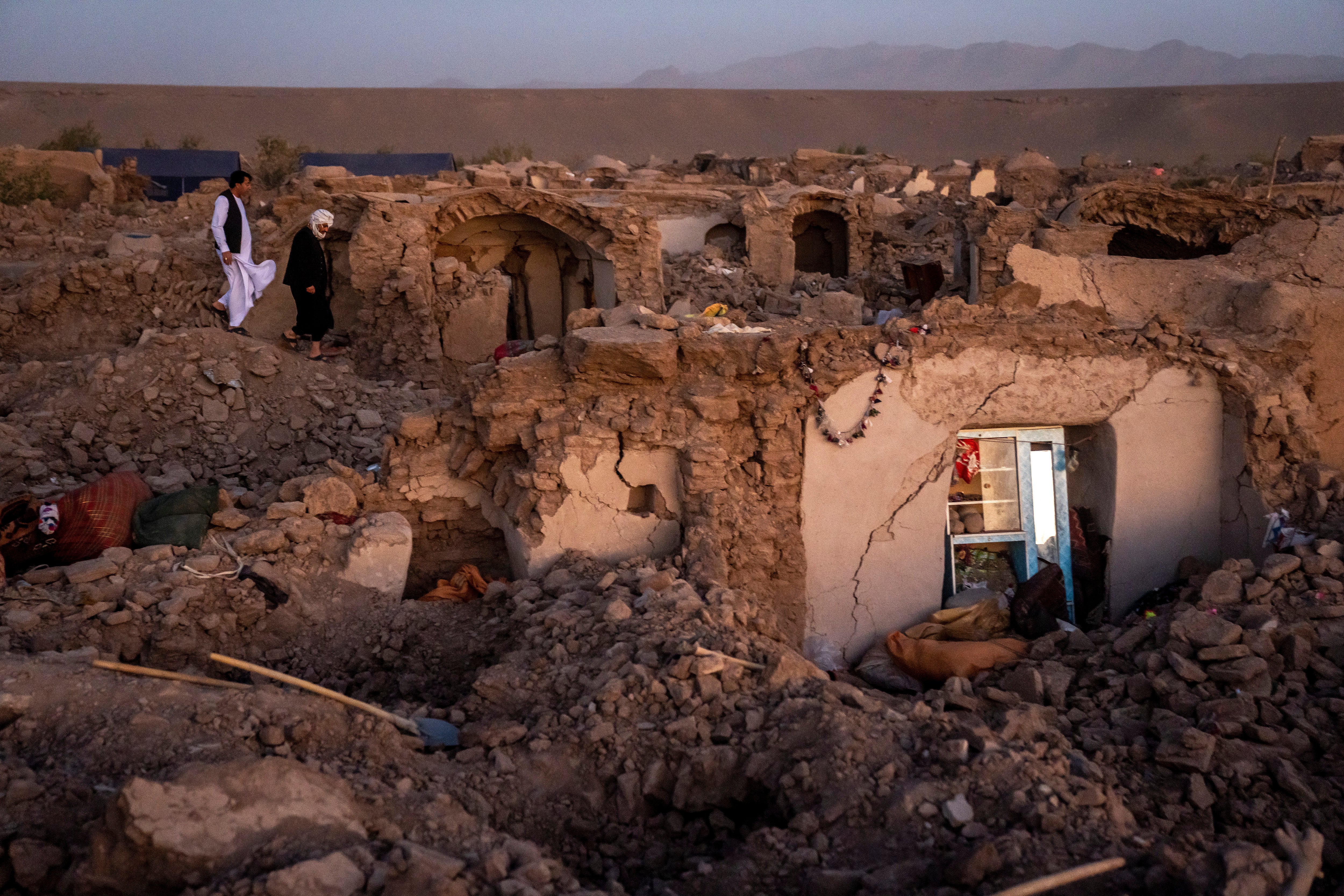Survivors struggle to rebuild their lives three months after Afghanistan's devastating earthquake
Survivors of a massive earthquake that struck Afghanistan's west on Oct. 7 say they're struggling to rebuild their lives, three months after the disaster

Your support helps us to tell the story
From reproductive rights to climate change to Big Tech, The Independent is on the ground when the story is developing. Whether it's investigating the financials of Elon Musk's pro-Trump PAC or producing our latest documentary, 'The A Word', which shines a light on the American women fighting for reproductive rights, we know how important it is to parse out the facts from the messaging.
At such a critical moment in US history, we need reporters on the ground. Your donation allows us to keep sending journalists to speak to both sides of the story.
The Independent is trusted by Americans across the entire political spectrum. And unlike many other quality news outlets, we choose not to lock Americans out of our reporting and analysis with paywalls. We believe quality journalism should be available to everyone, paid for by those who can afford it.
Your support makes all the difference.A 6.3 magnitude quake on Oct. 7 killed and injured thousands of people in Afghanistan’s west. Three months on, survivors are struggling to rebuild their lives.
Some families are living in canvas-colored tents in Zinda Jan district, the quake’s epicenter in the province of Herat, where every home was flattened.
People endure the winter conditions with the help of donations and their Islamic faith, but they’re anxious about what lies ahead.
Habib Rahman, 43, was watching TV at his father-in-law’s home when the quake struck. The horror still rings in his ears. He can’t get it out of his head.
However many details he gave about that day would never be enough, he told The Associated Press.
Every squat mud building in Zinda Jan collapsed within minutes. Fear, shouting, panic and shock swept through villages. People used their hands to pull the living and the dead from under the rubble.
“If we look at this soil and dust, we will go beyond crazy,” Habib said. “The children are psychologically affected. Sometimes I play with them to distract them from being anxious and (help them) forget about the earthquake. But they don’t forget.”
The winds and storms continuously knock down and tear the tents of Zinda Jan, the people's only refuge from the bitter cold. “Give us your heart (warmth), find shelter for us,” he implored. “The weather is cold. It is very cold.”
Children still don't have access to a mosque or school, he said. He wonders what will happen to them, their future. He wants life to return to how it was before the quake, when villagers had their own means and resources.
Before the quake, 55-year-old Mula Dad Mohammadi had a house with six rooms, a kitchen, and space for crops, livestock and timber. Now, he shelters underneath tarpaulin and sheets with his wife and children. He is grateful for the relief efforts but wants measures for longer-term recovery.
“Our farming and agriculture have been destroyed,” he said. “Our property and lives have been destroyed. What they gave us was for a temporary period — two sacks of rice and two sacks of wheat. Let us do our own farming.”
The global response to the disaster was slow, with much of the international community wary of dealing directly with the Taliban-controlled government.
The world was also focused on the surprise attack by the militant Palestinian group Hamas on Israel on Oct. 7 that triggered the ongoing war, only hours before the quake hit Herat.
The Taliban, NGOs, the U.N. the country’s private sector and the Afghan public rallied around quake-hit communities to help with cash assistance, food, clothing, medicine, and reconstruction.
Pale blue domes resembling beehives — built in Zinda Jan with donations from the Afghan diaspora, including artists and singers — could now be seen dotting the skyline. They're sturdier than the houses normally seen in much of Afghanistan and are intended to be more earthquake-resistant.
It's the first time that this type of housing, known as super adobe, has been seen in the country. Project manager Shakib Shahabi, from a local nongovernmental organization, called the Agency for Humanitarian and Development Assistance for Afghanistan, said 37 homes have been built in 32 days.
“We have lessons learned from the implementation of this project and we're willing to share our experiences with interested organizations,” he said.
Nisar Ahmad Ilias, a spokesman for the Herat governor, said 3,000 houses are being worked on in Zinda Jan. Some are 90% finished and others are 20% completed. Survivors still need help because of the scale of the disaster. He urged Afghans — and the rest of the world — to step up their response.
“Natural disasters happen in other countries as well,” said Ilias. “The international community, which has helped in those places, has not done it here. It is necessary for them to take more steps and stand with Afghans.”